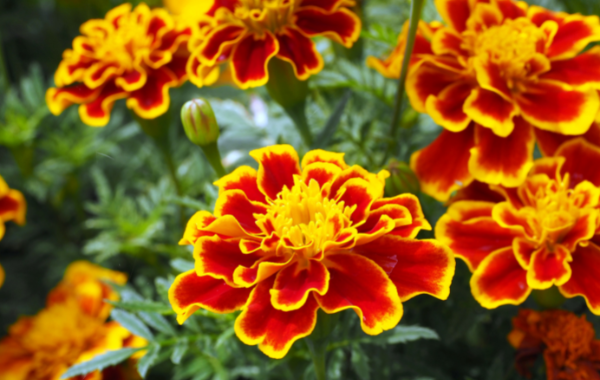==================
A Caveat and Affiliates
First off, a little caveat: within my articles you will find affiliate links, meaning if you buy them, I get a small commission. Your cost is not affected. In addition, I am an Amazon Associate and I earn from qualifying purchases on Amazon.
And yes, if I say that I recommend a product here, it means I truly believe it is a good product. I refuse to recommend any product that I have not researched and believe to be a good value.
Even better, I provide you with a very clear picture of the product, it’s use, and the probable value.
Earning your trust is important to me. I run this website myself and the commissions and donations help support the site.
Sound reasonable and fair enough? Let’s continue to the article.
==================
Why Plant Marigolds in Your Backyard Garden?
Why plant marigolds in your backyard garden? Well, if you adore vibrant-colored flowers in your backyard garden, learn to grow and care for Marigolds. Also, if you like no-fuss bushes that even kids and newbies can take care of, you should not miss them on your list. They are one of the best! But those are just a few of the nice things about marigolds. There are many more benefits to you and your garden.
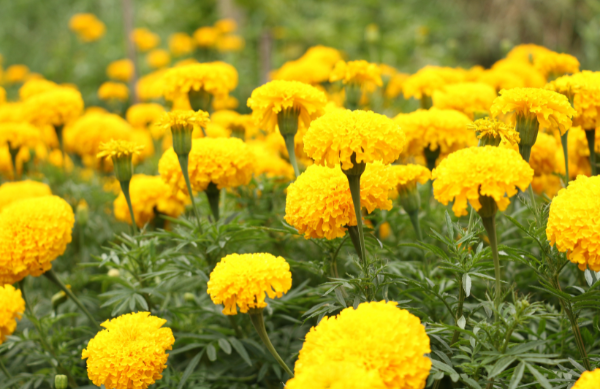
On top of these flowers’ sunny vibes in the yard, they’d provide many other healthful benefits you’d discover as we continue. Indeed, marigolds are so striking that it’s a great idea to also grow cool-colored flowers and vegetables to set off and contrast nicely with their warm, vivid colors. On top of that, the earth colors of the tree trunks, the ground, and other objects, natural and man-made will add to that positive experience and create a harmonious palette of plant and flower hues.
Indeed, Marigolds are such a beauty to behold. They come in various bright and striking colors depending on their variety – red, yellow, orange, red-yellow, white varieties, and a lot more. Imagine going out to check your garden and seeing their bright colors complementing and setting off the various hues and shapes of other vegetables, plants, and fruits. Read on and learn how to grow and care for Marigolds in your backyard garden.
Getting to Know Marigolds in Your Backyard Garden
Marigolds are native to Mexico but can be found all over North America. However, they have also become widespread and are present almost anywhere in the world. It is a genus of annual or perennial plants that grow, bloom, and die within a year. They have a life span that lasts for a maximum of 8 months, depending on their care.
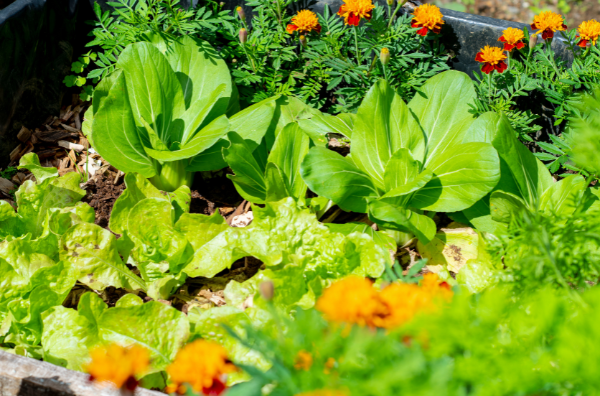
They are suitable for companion planting with herbs and other vegetables except for cabbage and beans for your raised garden beds. That’s why Marigolds in your backyard garden are beneficial for your vegetables and herbs. You may use them for:
- Herbs like basil, dill, and parsley
- Cruciferous vegetables such as kale, broccoli, Bok choy
- Fruit-bearing vegetables such as tomatoes and eggplant
- Climbing vegetables such as squash, gourd, and cucumbers
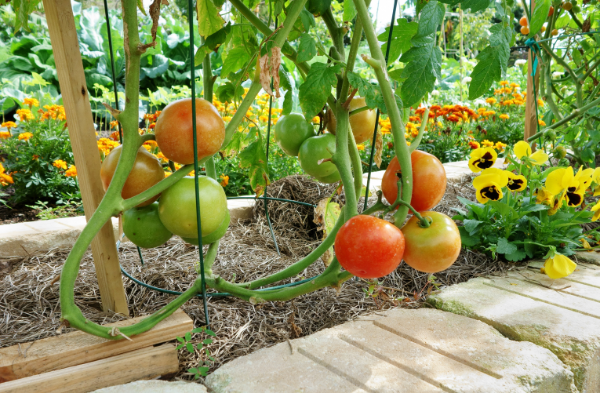
Marigolds have over 50 types that belong to 3 major groups:
- French
- African
- Signet
Tagetes Patula or French Marigolds
French Marigolds grow to an average height of around 12 inches. They bear maroon, red, orange, and yellow flowers. They can be grown in full to partial sun with well-draining moist to dry soil. So, they can cope with spring, summer, to fall. So, once established or well-rooted, they become drought-tolerant.

Tagetes Erecta or African Marigolds
African marigolds, also called American marigolds or Aztec marigolds, are huge annuals that bloom from early summer until frost. African marigolds are taller and more tolerant of hot, dry conditions than French marigolds. They also have larger flowers of up to 6 inches in shades of yellow to orange.
The main difference between African and French Marigolds is that the petals of French marigold flowers are more ruffled than those of African marigolds. Furthermore, French marigolds are available in a wide range of shades, while African marigolds have petals with yellow to orange hues.
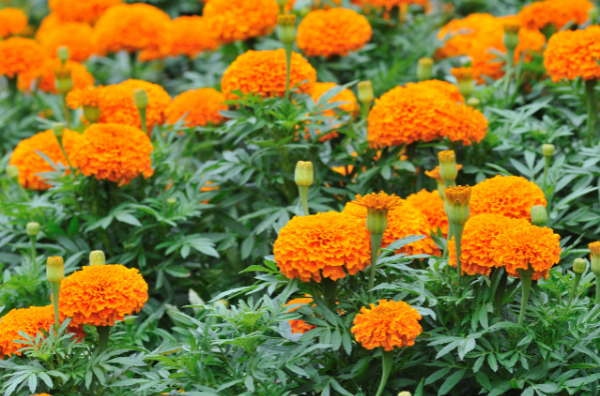
Tagetes Tenuifolia or Signet Marigolds
Tagetes Tenuifolia or Signet Marigold has abundant small single flowers from bright orange to maroon. It is also known as American Saffron, Striped Mexican Marigold, Slender Leaf Marigold, Lemon Gem, or Orange Gem. It is a compact and bushy annual plant with rich-colored blossoms.
You can use Signet Marigolds to landscape your backyard garden. Plant them as bedding plants for your raised garden beds in the backyard. Or you can use them as edging plants to make a border or containers placed on your patio. They will add colors to brighten your place while at the same time exude exotic fragrances from their flowers and leaves.
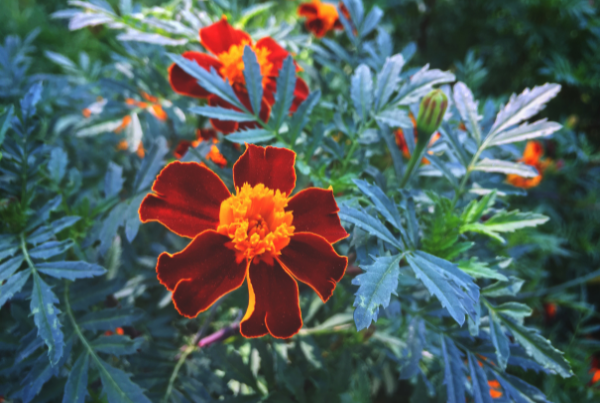
They can also withstand direct light to partial sun, grow from 10 to 12 inches, and be spaced from 10 to 18 inches apart. Marigolds are low maintenance, so they only need medium water in chalky, loamy, clay, or sandy soil. But they give a showy display of colors and are fragrant, too! No wonder they attract pollinators, especially butterflies. So, Signet Marigolds in your backyard are great additions because they don’t need a lot of attention to grow.
Caring and Growing Marigolds in Your Backyard Garden
Marigolds are among the easiest-grown plants. They germinate quickly, sprout within a few days, and bloom in about six weeks. You can propagate Marigolds from seeds or their cuttings. Although the mortality rate of the latter is high, it works for some. Also, Marigolds are frost-tender, so make sure you plant them when the last frosts are over.

How to Plant Marigolds in Your Backyard Garden?
Here are the steps to plant Marigolds in garden beds or seedling trays. But once the seedlings grow, thin them out and arrange with enough space between them. They can grow lush and bushy depending on the variety and condition. So, follow these steps, and you won’t make a mistake with beautiful Marigolds in your backyard garden.
Steps In Planting Marigolds
- Moisten the soil, and you can use multi-purpose compost or garden soil.
- Plant in the ground and sow the seeds directly at a distance of one inch and a one-inch depth.
- Make sure that the soil is free from weeds. You can also plant them on seed trays and plant them out later. Add marigold seeds, spread out enough, and sprinkle the soil again with water to keep it moist.
- Cover the seeds with soil but not too much; keep them protected.
- Check regularly for germination, which may take a few days.
- Thin the seedlings once they appear, and you can pop them up and transfer them to their permanent containers or space in your raised garden beds.
- Move them into the sun once they have grown.
- Space the seedlings accordingly. The French and signet types are eight to ten inches apart, while 10 to 12 inches for the African Marigolds.
How to Care for Marigolds?

Marigolds need very little in the way of care since they are not fussy. Once they have become established, you don’t have to water them daily. And avoid flooding them from overhead because it will rot the leaves and stems, so water them from the base. They don’t need too much fertilizer because they become weaker and their blooms fewer. So, add fertilizer sparingly.
Also, they thrive in the sun. And they enjoy the full sun, so give them a sunny spot. But watch out for some insects such as powdery mildew and aphids, too. You can hose them off to eliminate these sap suckers, but if the infestation has become too much to handle, then you can use an appropriate insecticide and spray them off.
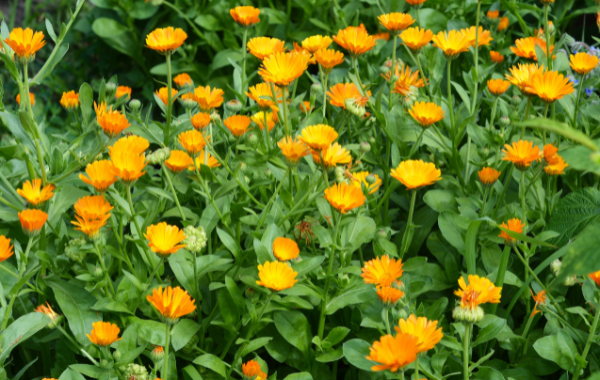
Uproot dead and rotting heads of marigolds in your backyard garden regularly. Also called deadheading, it is cutting off wilted and faded flowers. You can use pruners, scissors, or your hands and pinch off the dead heads. Deadheading encourages new blooms and will keep your marigolds flowering continuously and profusely. You can also mix into the soil the chopped deadheads to prevent the presence of nematodes.
Marigolds’ Inner Beauty
Marigolds are not just striking additions to your backyard gardens but have many surprising benefits. Their flowers and leaves may not be pleasant to your nose, but they are deterrents to many pests. They are also a source of essential oils, while the flowers alone serve as food and colorants. So, grow and enjoy marigolds by planting them on garden beds or as edging plants.
Keep Pests at Bay
One of the amazing things about Marigolds is their ability to repel insects such as cabbage worms, whiteflies, and hornworms. These insects hate the smell of the scents that the Marigolds produce. That is why Marigolds are the favorite companion plants of farmers to their vegetables such as eggplants, peppers, tomatoes, squash, cucumbers, and melons.

Marigolds can also deter or control root-knot nematodes, parasitic worms that feed on the roots of the plants and damage them. Marigolds’ roots and stems emit a substance toxic to these parasites and stop their eggs from hatching. You need to plant Marigolds two months before you plant your vegetables to effectively protect them by keeping harmful insects at bay.
Attract Important Pollinators

Insects that pollinate your gardens, such as butterflies, bees, and even hummingbirds, can’t stop loving the adorable Marigolds. Well, it means good tidings for your garden. When these pollinators are present, they bring many benefits, especially if you have plants that rely on these insects to set fruits. Fruit set is when the flower turns into a fruit. Thus, they help increase your harvest. It is also a sight to behold these pollinators feasting on Marigolds in your backyard garden!
Have Medicinal Uses
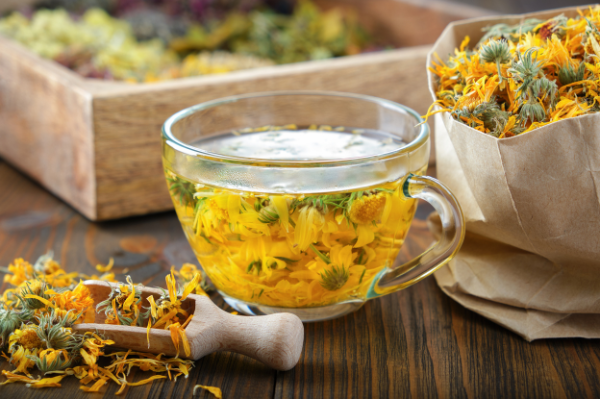
Marigold’s flower heads can also be medicinal. Since ancient times, people have applied them to treat fever, toothaches, bee stings, and wounds. And modern herbalists have added more ways to use marigolds, such as astringent, tonic, and others. Its high carotenoid content is also beneficial for eye health.
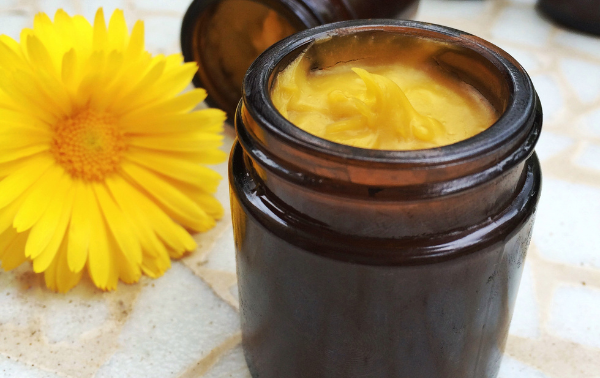
Marigold has medicinal benefits for the skin when using its natural oil, Calendula. The oil is extracted from its flowers that have antifungal, anti-inflammatory, and antibacterial properties. Calendula is great for soothing and healing wounds, diaper rash, bruises, varicose veins, eczema, and sunburns. Why not bring all these health benefits of Marigolds to your backyard garden?
Serves as Food and Natural Colorant

Lutein, a substance found in Marigold flowers, is used as a food colorant for cakes, yogurts, salad dressings, and much more. It’s a more healthful and natural alternative to synthetic colors that can pose a danger to health, so there are restrictions or limits to their use. Natural plant pigments are great options for food colorants.

Marigold flowers are edible and can be eaten whole. They make your salad look appetizing and can give it a distinct taste from mildly citrusy to subtly spicy. They also have a history of turning them into a healing tisane by the ancient Greeks for insomnia and nervous tension. They are not only beautiful but full of health benefits.
A Flower Ingredient to Make Perfumes

Seriously? Yes, Marigold oils, when extracted, are used extensively in perfumes. The distinct aroma is just perfect for men’s perfumery. Some women’s fragrances also have this exceptional note from Marigolds’ essential oils. But most of the scent comes from their leaves, a somewhat sharp and musky aroma.
Conclusion
Marigolds are lovely and beneficial in your backyard garden. Flowers have bold, bright, and striking colors. They attract bees and butterflies; and the same time, prevent pests from your backyard. You can add the flowers to salad, use them as tisane tea, and as a food colorant.

These are just some of the benefits that Marigold offers. There’s a lot more and knowing this plant’s versatility and uses can make them among a gardener’s top favorites. So, grow Marigolds in your backyard garden and enjoy their hard-to-ignore beauty and benefits.
Happy Gardening!
